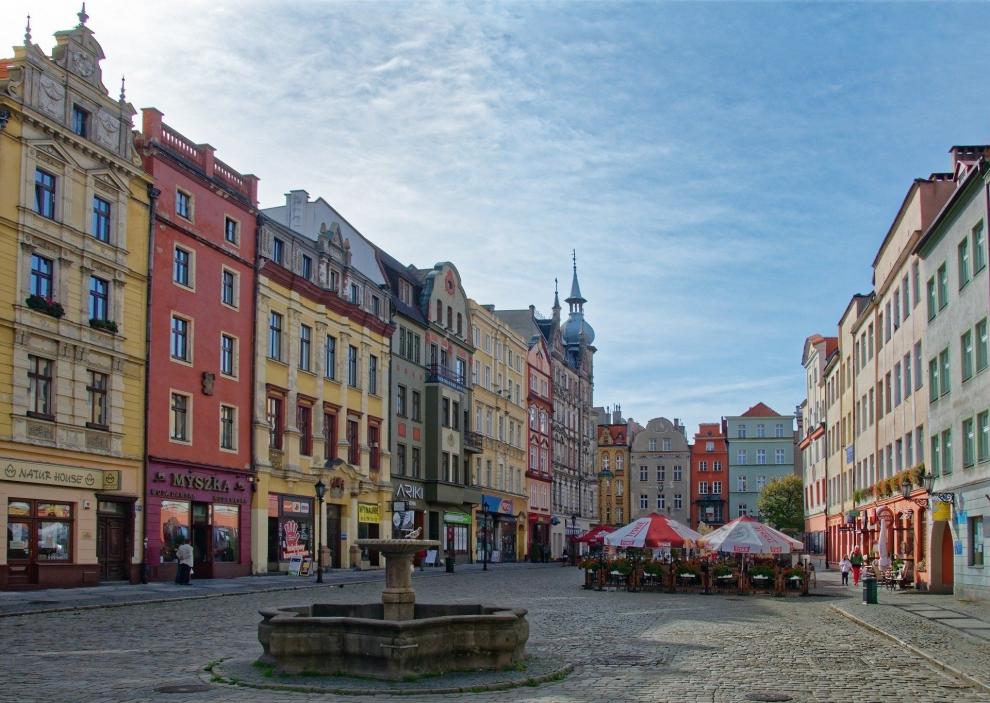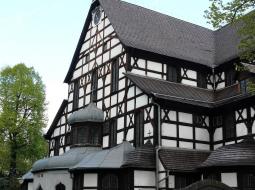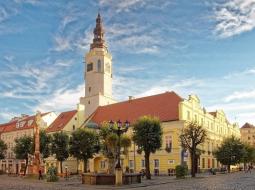Thessaloniki gets ready for its metro launch in November
The underground rapid transit lines have been under construction for almost two decades due to various project delays
 TheMayor.EU logo
TheMayor.EU logo 
The area around Świdnica was already inhabited in the Neolithic era. During the early Middle Ages, it was inhabited by the Slav tribe of Ślężanie. Sometime around 990 Silesia was occupied by Prince Polan Mieszko I and annexed to Poland.
Świdnica was first declared a city around 1250. At that time, it belonged to the Duchy of Wrocław whose prince Henry IV granted it its city privileges. After his childless death Świdnica together with part of the Duchy of Wroclaw fell in 1290 to Bolko I the Strict who made the city the capital of the principality.
At the beginning of the XIVth century, the city already had defensive walls with six gates, a parish church and two monasteries. In 1285, there were guilds of bakers, weavers, potters, shoemakers, furriers and tailors in Świdnica. In 1308 the son of Bolek I, Bernard, took over but was forced to divide the principality into three parts with his brothers.
The land was partly united and significantly expanded over time by his son Bolko II Mały, who reigned in the years 1326-1368. At the end of his reign, the lands of the Duchy of Świdnica-Jaworski stretched from Dzierżoniów and Niemcza to Lusatia. In 1353, Bolko II and Charles IV concluded a succession arrangement, as a result of which the Duchy of Świdnicko-Jaworia became part of the Holy Roman Empire.
Almost a century of reign of the Świdnica Piasts was a period of rapid development. Świdnica was widely known for producing excellent beer, cloth and knives. The city was ruled by a council headed by the mayor. Yet, life was disturbed by great natural disasters.
After the Battle of Mohács in 1526, where the king of the Czech and Hungarians Ludwik Jagiellończyk died in the fight against the Turks, all Silesia came under the rule of the Habsburgs, besides Silesia which remained under the Czech Crown.
The reformation caused the majority of residents to convert to the Protestant denomination and took over most of the churches, including the parish.
In the next century the Thirty Years War broke out (1618-1648) and Silesia was almost completely devastated. Świdnica was completely ruined, suffered from the plague and never regained the standing it had before.
During the war between Austria and Prussia Silesia was incorporated into the Prussian state. During the Seven Years' War (1756-1763), hostile armies besieged the city four times, conquering it each time. It was only the economic reforms of the Napoleonic Wars that caused some revival.
Soon after the end of WWII, a Polish operational group arrived in the city, took over and began organizing local administration. The German population was displaced, and Polish settlers came in to replace it. The city itself did not suffer major losses as a result of the war, which facilitated its subsequent development. In the post-war period, the industry was significantly expanded.
The year 2004 brought the creation of the Świdnicka Diocese.
Swidnica is located in south-western Poland in the region of Silesia. On January 1, 1999, Świdnica became the capital of the Swidnica County (powiat). It has an area of around 21.76 square kilometres and a population of 57,671 inhabitants (as of 2018).
The Wałbrzych Special Economic Zone Invest-Park was created in 2004, which is historical event for the local economy. Since then, 12 companies have invested in Świdnica, including Colgate - Palmolive Manufacturing Poland Sp. z o. o. and Electrolux Poland Sp.

In 2001, the most valuable monument in Świdnica - the Peace Church St. Of the Trinity, was declared a World Cultural Heritage and was included on the UNESCO List.

Świdnica - the pearl of the Silesian Baroque, famous for its excellent beer, delicious gingerbread, merchant traditions, antique market, numismatic items and curiosities, religious conflicts between Catholics and Protestants, which resulted in two impressive temples, the Church of Peace and St. Stanisław and Wacław is today considered to be an absolute "must visit" among tourists.
The history of Poles, Czechs, Germans, French, Hungarians, Austrians, Greeks, Jews and Russians intertwine in Swidnica. One of the oldest flea markets in Poland was also born here.
49 Armii Krajowej str
58-100 Świdnica